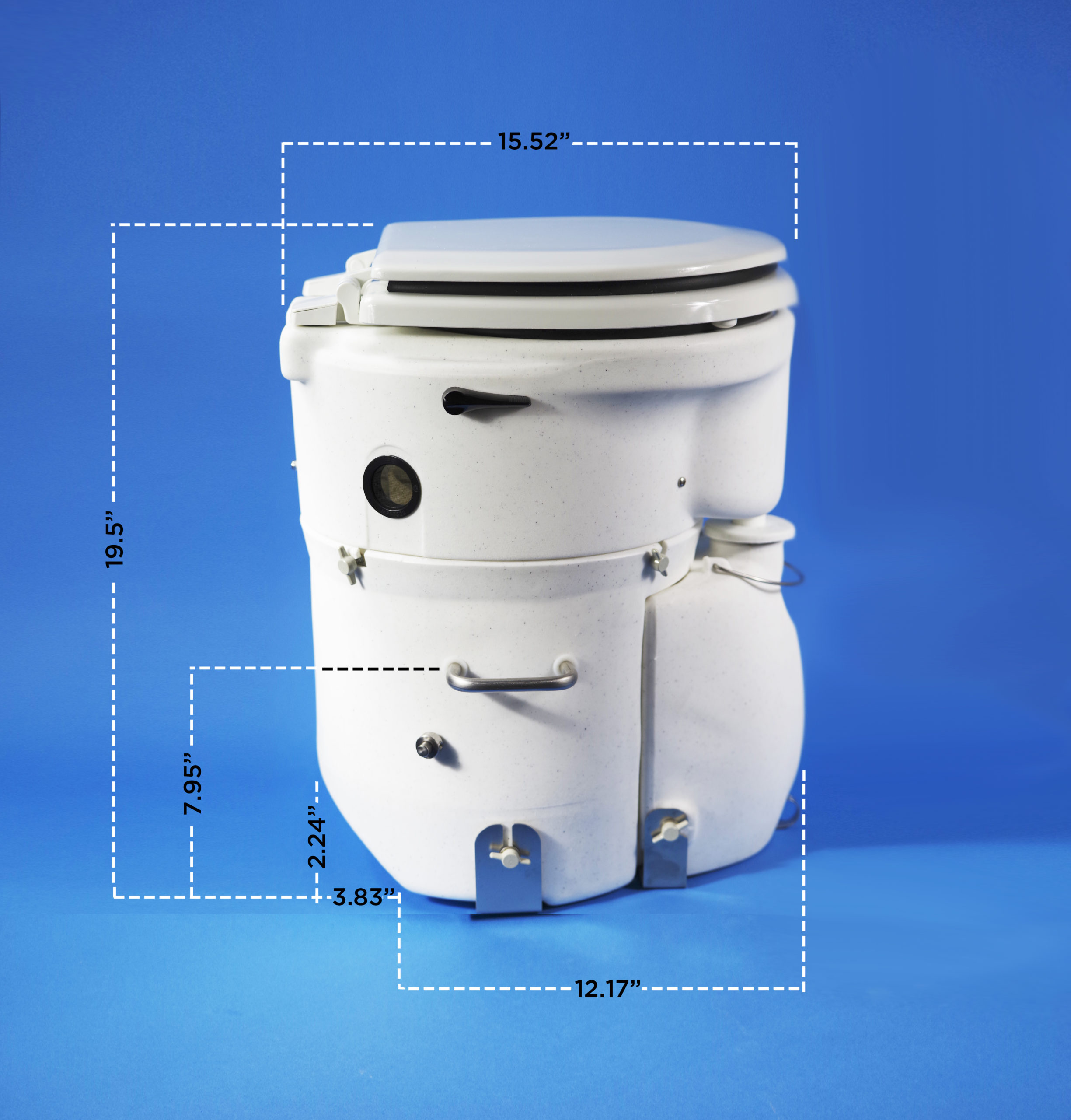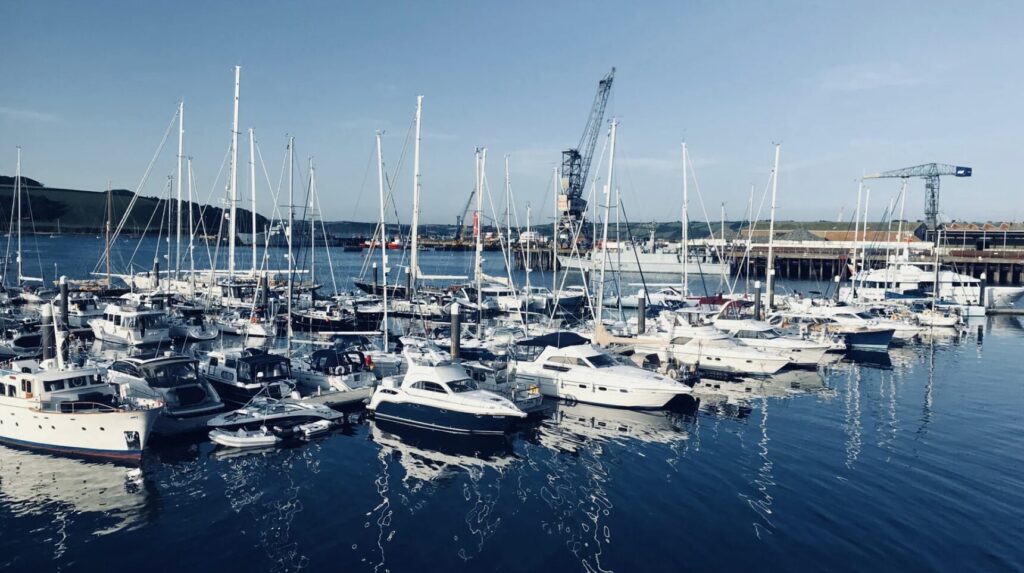
Comparing Marine Sanitation Solutions: Why Air Head is the Best Composting Toilet for Boats
Rethinking Marine Sanitation
For boaters who spend significant time on the water, sanitation is more than a comfort—it’s a necessity. Traditional marine heads come with a slew of challenges, including annoying plumbing systems, holding tank odors, limited capacity, and the constant hassle of pump-outs. For liveaboards, cruisers, and weekend sailors, finding a reliable, low-maintenance alternative has become a bit of a luxury.
Enter the composting toilet—specifically, the Air Head composting toilet, which has quickly become the go-to marine solution for thousands of boaters worldwide. In this comprehensive comparison, we’ll explore how composting toilets work on boats, evaluate the pros and cons of common marine sanitation setups, and show why the Air Head stands tall as the best composting toilet on the market.
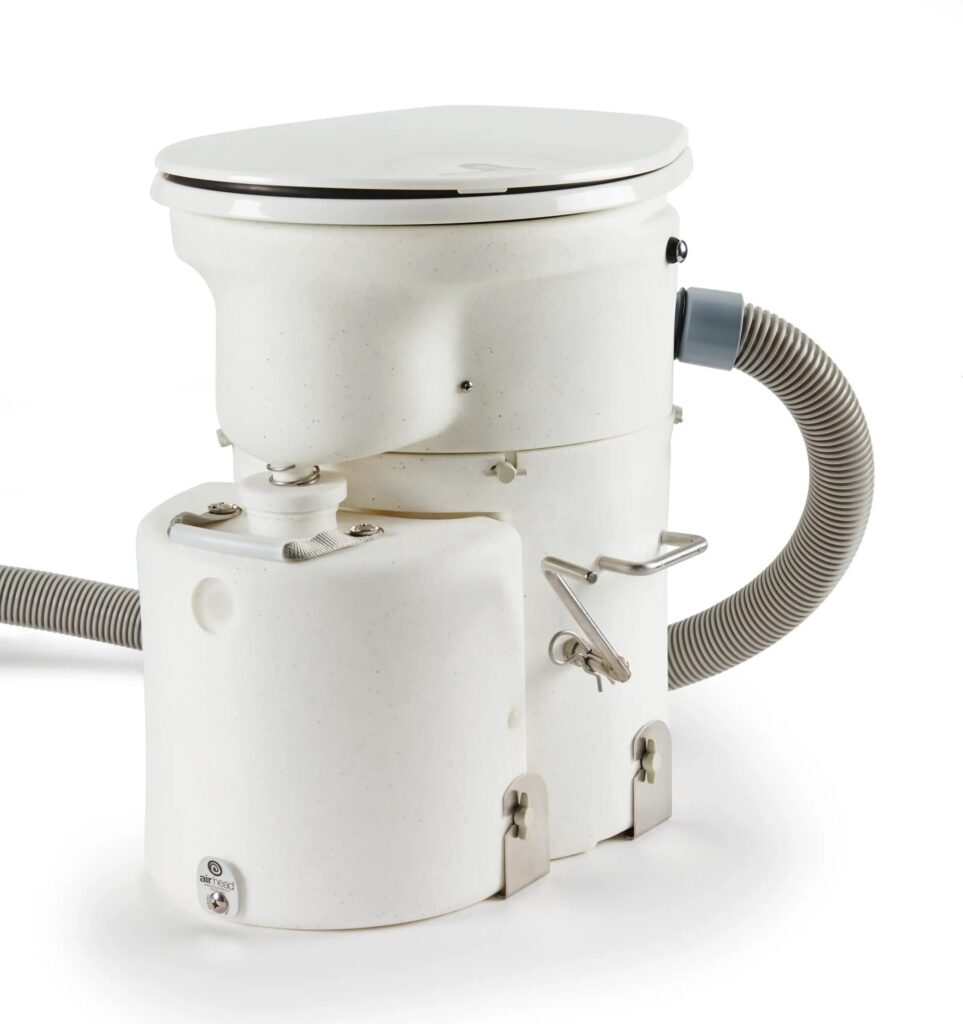
What Makes a Toilet “Marine-Ready”?
Marine sanitation isn’t like household plumbing. A “marine-ready” toilet must fit in tight quarters, handle motion and humidity, and minimize odor and maintenance—all while complying with environmental regulations.
Toilets designed for boats must be compact, efficient, and capable of operating in remote locations without frequent servicing. They should also perform reliably without reliance on large volumes of fresh water or complex holding tanks. As more vessels embrace long-term cruising and off-grid adventures, these requirements become even more critical.
That’s where composting toilets come into the picture. They check every box for today’s eco-conscious mariners. And while several composting models exist, not all are engineered for life at sea. The Air Head composting toilet was specifically created for marine environments—unlike generic composting units that were adapted from land-based applications. Learn more about what makes a marine-ready composting system here.

How Does a Composting Toilet Work on a Boat?
At its core, a composting toilet separates liquid and solid waste and uses natural processes to break down solids into dry, compost-like material. But how does a composting toilet work specifically in a marine environment?
First, urine is diverted into a sealed bottle for easy and frequent emptying—typically every 2–3 days. Or, for our new model, Tejo, it can route ruine to a remote, or already installed tank in your boat. Solid waste drops into a composting chamber containing a bulking agent (such as coco coir or peat), which dries the waste and encourages aerobic decomposition. A small fan maintains airflow and eliminates odor while also assisting with evaporation.
This is where the Air Head composting toilet excels. Its efficient urine separation system, easy-to-crank composting chamber, and odorless ventilation design make it an ideal fit for small marine heads. For more on the science behind composting toilets, the EPA offers an informative overview on alternative waste treatment.
Marine Composting Toilets vs. Traditional Heads: A Real-World Comparison
Let’s compare a standard marine head and holding tank system with a modern composting toilet:
| Feature | Traditional Marine Head | Composting Toilet (Air Head) |
|---|---|---|
| Water Use | 0.5–1 gallon per flush | Zero water used |
| Odor Control | Requires chemicals & regular pump-outs | Natural ventilation, no odor |
| Installation | Plumbing, through-hull, holding tank | Simple, self-contained |
| Maintenance | Frequent pump-outs, clogs, leaks and servicing | Occasional emptying & cleaning |
| Legal Compliance | Limited by discharge zones | Compliant in all no-discharge zones |
Traditional systems require chemical treatments, constant monitoring of tank levels, and regular pump-outs at marinas, which can be costly and inconvenient. In contrast, composting toilets are self-contained, legal in sensitive waters, and don’t require plumbing or seawater.
The Air Head system provides clear advantages—especially for long-term cruisers, liveaboards, and those traveling in remote areas where pump-out stations may be few and far between. Here’s a guide on how to safely empty your composting toilet. The Rise of the Air Head Composting Toilet in the Boating World
The Air Head composting toilet wasn’t just adopted by boaters—it was built for them. Developed by sailors who were frustrated with marine sanitation systems, Air Head quickly gained popularity among the cruising community for its durability, functionality, and odor-free performance.
Today, Air Head units are installed on sailboats, trawlers, catamarans, and even high-performance racing vessels. It has become a favorite among full-time liveaboards and long-distance sailors who value autonomy and sustainability. See real customer experiences and testimonials here.
More importantly, Air Head has stayed ahead of its competitors by focusing on thoughtful design elements like a low-profile shape, urine-separating bowls, and easily swappable solids tanks. It’s not just a toilet—it’s a trusted marine companion.
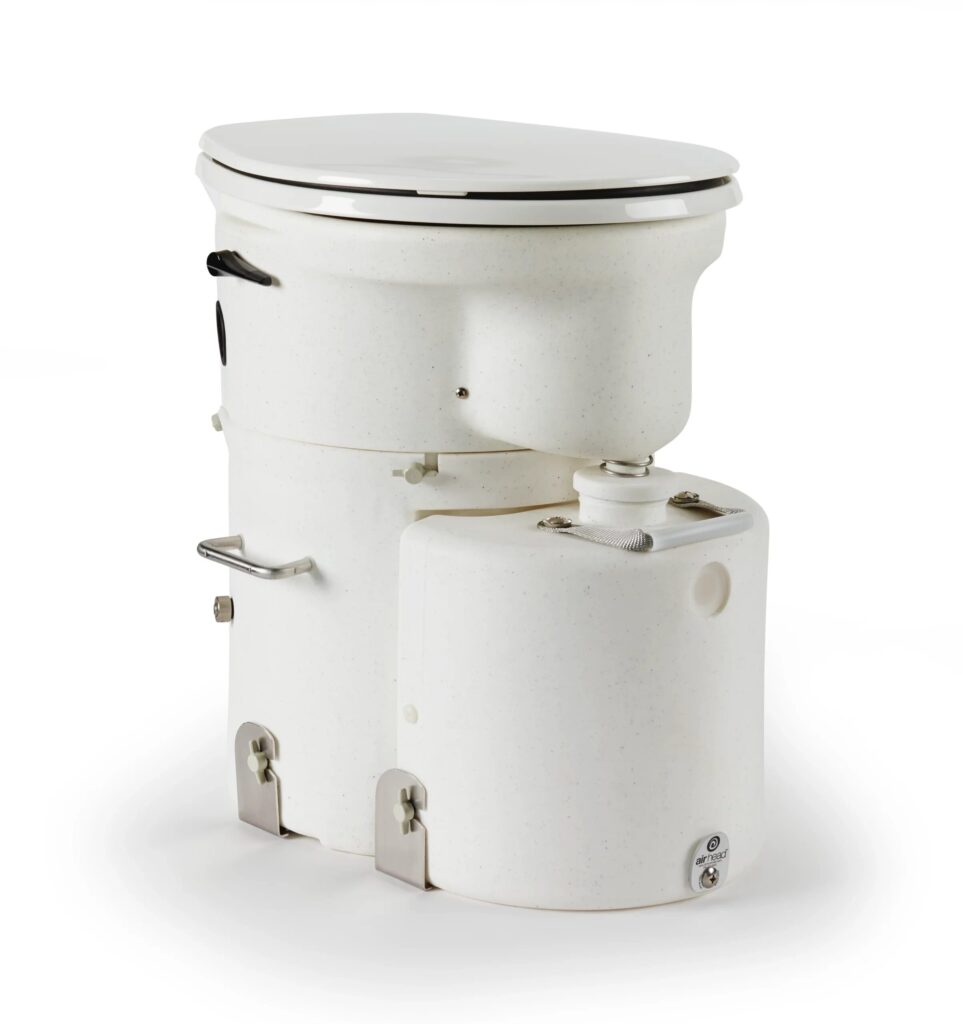
Why Air Head Ranks as the Best Composting Toilet for Boats
So what makes Air Head the best composting toilet in the marine market? Let’s break it down:
- Compact Design: Its space-saving footprint fits most marine heads without custom work.
- Efficient Ventilation: Built-in fan with optional filters ensures continuous airflow and zero smell.
- Gender-Inclusive Operation: The bowl design is optimized for both male and female users—more on that here.
Compared to other composting toilets like Nature’s Head or C-Head, Air Head’s features stand out in usability and installation flexibility. See the detailed side-by-side comparisons.
It’s this combination of design ingenuity, marine expertise, and customer support that has cemented Air Head as the top choice for boating toilets worldwide.
Long-Term Cruising? Here’s Why Air Head Outperforms
For sailors spending weeks or months at sea, reliability is everything. Air Head has proven itself over tens of thousands of nautical miles thanks to:
- Low Maintenance Requirements: Solids can often go 3–4 weeks before needing to be emptied.
- Odor-Free Use: Even in tropical climates, users report no smell—thanks to efficient air circulation and separation.
- Power Efficiency: The fan uses minimal power (about 1.7Ah per day), which is critical on solar or battery-only setups.
These are not just features—they are necessities for bluewater sailors. In fact, the benefits of composting toilets for ocean passages are well-documented.
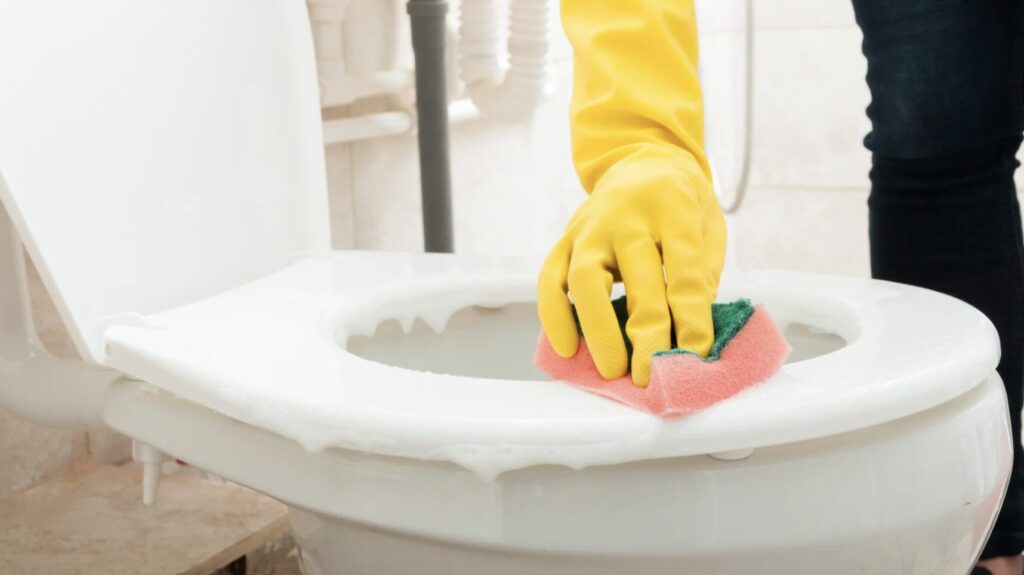
Maintenance, Cleaning & Emptying: What to Expect from the Air Head Composting Toilet
Unlike traditional heads, the Air Head composting toilet is easy to maintain. Liquids are emptied every couple of days, while the solids chamber can last weeks—depending on usage.
Cleaning is straightforward: spray with vinegar, rinse with biodegradable soap, and replace the compost medium (like Six Peat bricks) when needed. Here’s a detailed guide to keeping your composting toilet clean.
The fan system and urine bottle cap are both user-serviceable, and there’s a wide selection of spare parts, from extra tanks to vent filters.
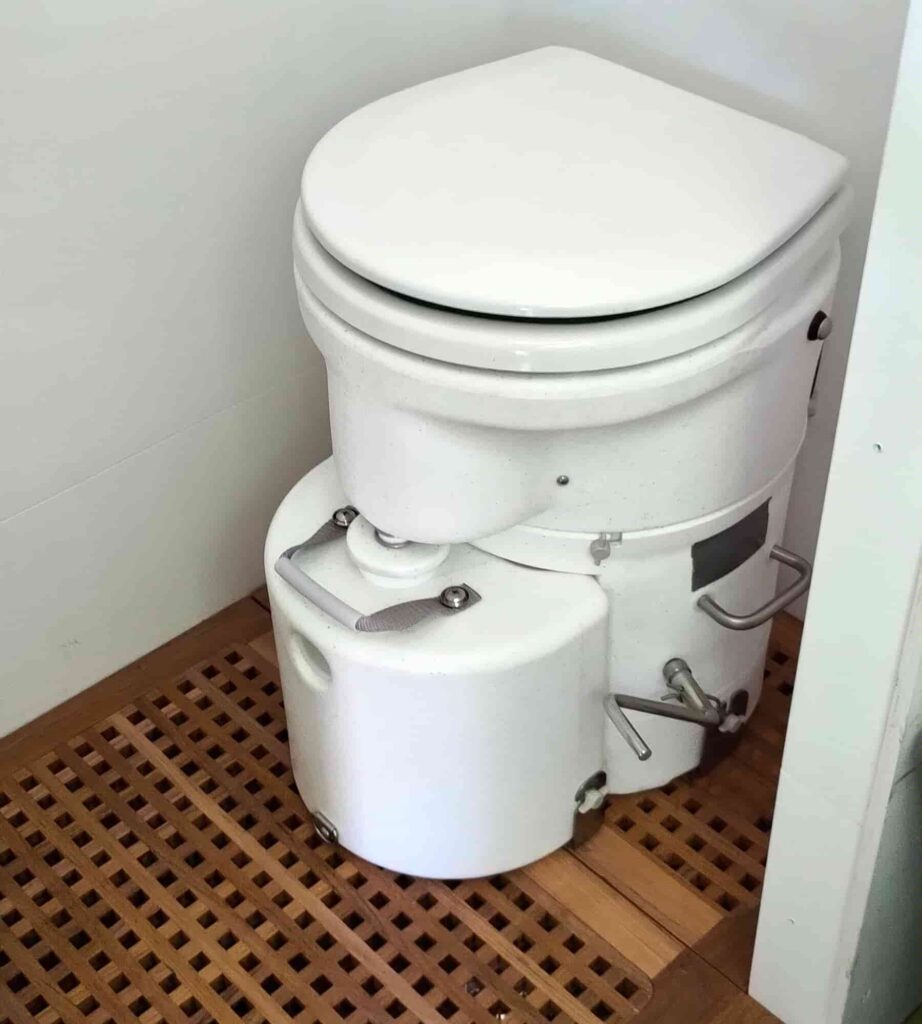
Investing in the Best Composting Toilet: Cost vs. Long-Term Value
Let’s talk numbers. A traditional marine head setup can cost thousands in installation, holding tanks, hoses, and ongoing pump-outs. In contrast, a complete Air Head unit offers:
- No plumbing
- No pump-outs
- Low power draw
- Nearly odorless performance
- Long-lasting parts and support
Over a 5-year period, the total cost of ownership for an Air Head is significantly lower—especially when factoring in the elimination of marina pump-out fees and maintenance. According to Sail Magazine, many cruising couples recoup their investment within 18 months.
Final Verdict: Why the Air Head Composting Toilet is the Smartest Marine Upgrade
If you’re ready to ditch pump-outs, simplify your boat systems, and embrace a cleaner, more sustainable future at sea, the choice is clear: the Air Head composting toilet is the best composting toilet for marine use—bar none.
It’s trusted by liveaboards, praised by sailing communities, and engineered to meet the real challenges of life on the water. From its intelligent design to its hands-on customer support, Air Head is more than a toilet—it’s a reliable upgrade to your onboard lifestyle.
Use this guide to help you choose the right unit for your vessel or contact the Air Head team directly with questions.




